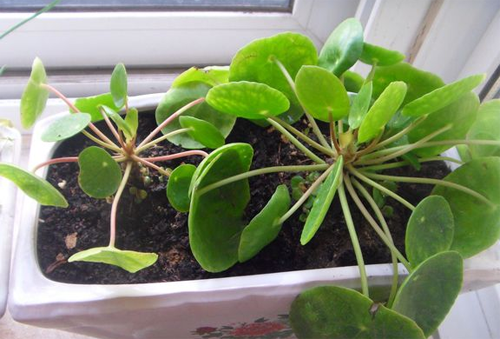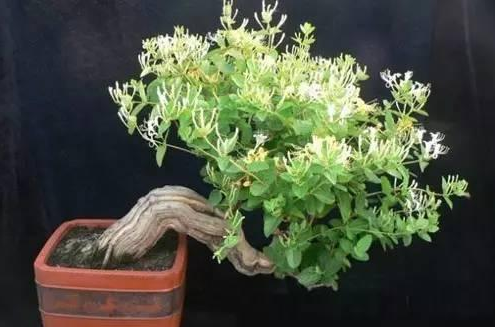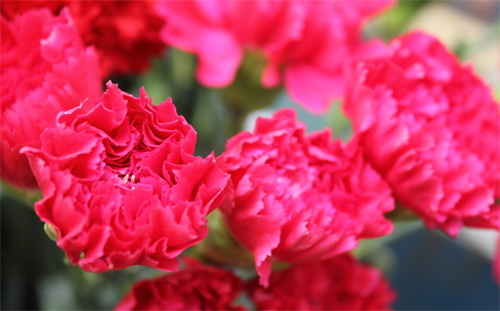Can the culture method of mirror grass be raised in water?
Mirror grass because the leaves grow like mirrors, so there is this title, mirror grass breeding method is what kind of it? Can mirror grass grow in water?

The cultivation method of mirror grass:
1. Temperature
Mirror grass is not resistant to cold, winter temperature should not be lower than 10℃, if encountered 31-51 days of long-term low temperature, mirror grass easy to die of cold.
In winter, mirror grass can be placed in a medium temperature greenhouse. Mirror grass is very resistant to shade, as long as it reaches the brightness of ordinary newspapers, it can grow, so it is very suitable for family indoor potted plants.
2. Pay attention to watering
Cultivation mirror grass should always keep the pot soil moist, avoid standing water, in case mirror grass leaves discolor, wilt or even stem rot.
Water should see dry see wet, in order to maintain air humidity, can often spray to mirror grass leaves.
3. Sunlight
Isn't this cute? Moss can be used to raise Oh, do micro-landscape is also quite unique!
Mirror grass likes bright scattered light, avoid sun exposure, in case of burning leaves, causing mirror grass color yellow. From late autumn to the following spring, mirror grass can see more sunshine.
4. Pay attention to summer
In summer, when the temperature is above 30℃, the growth of mirror grass will stagnate and the leaves will fall off easily. In particular, a sudden drop in temperature can cause the leaf stalks of mirror grass to discolor and partially fall off.
5. Fertilization
Thin liquid fertilizer is applied once every half month in the growth season of mirror grass, but it should be noted that excessive nitrogen fertilizer will cause excessive leaf growth and plant lodging of mirror grass, and thick fertilizer and raw fertilizer will cause root rot or even death of mirror grass.
6. Disease and pest protection
Mirror grass easily infected leaf spot disease, available 50% carbendazim diluted 600 times spray mirror grass, once every ten days, continuous spray 3 times.
When the mirror grass has blown cotton scale damage, it can be sprayed with 40% omethoate diluted 1000 times.
Mirror grass hydroponics is also very good, pay attention to the leaves do not touch the water!
Common anthrax and scale insect harm, anthrax can be sprayed anthrax Fumei, carbendazim and other control;
Scale insects can be sprayed with pesticides, chlorpyrifos and other control. Easily infected leaf spot disease, available 50% carbendazim diluted 600 times liquid spray, once every ten days, continuous spray 3 times.
Cotton scale can be sprayed with 40% omethoate diluted 1000 times solution.
7. Reproductive methods
Mirror grass propagation can generally be divided into plants, leaves or branches inserted, etc. Mirror grass roots are easy to form adventitious buds, grow some small plants of different sizes, spring temperature warmer when the sharp knife can be cut down from the mirror grassland plants and planted, easy to survive.
Mirror grass is also easy to germinate on the stem like clustered tillers, which can be carefully taken down from the stem with a sharp knife in late summer and early autumn, planted in clusters in red soil, placed in a cool place, watered with sufficient water, and kept moist with plastic film. The survival rate is also very high.
Can mirror grass grow in water?
It can be cultured, but the leaves should not touch the water.
The cultivation method of mirror grass was introduced here, and it could also be cultivated.
How to grow mirror grass? Culture methods and precautions of mirror grass
Mirror grass is a perennial succulent herb belonging to Pilea genus of Nettle family, named after its mirror-like leaves. Mirror grass leaves unique, beautiful posture, very suitable for indoor planting, with high ornamental value, is a kind of foliage plant worthy of promotion. So, how do you grow mirror grass? The cultivation methods and precautions of mirror grass are described as follows.
Picture: Mirror Grass
1. Cultivation method of mirror grass
1. Soil: mirror grass potted soil can be used decayed leaf soil, garden soil plus a little river sand, ashes, bone meal mixed culture soil. It is better to use loose, fertile, well-drained and humus-rich sandy loam. Family cultivation can be prepared by mixing 3 parts of moldy leaf soil +3 parts of garden soil +2 parts of river sand or furnace ash +1 part of decomposed organic fertilizer. When planting, it is necessary to mix well drained humus soil with sand, and use tiles to cushion the bottom of the basin to facilitate drainage.
2. Light: Mirror grass is shade-tolerant plants, but also like light, not strong light, scattered light is appropriate, too strong or too shaded, the leaves are easy to fade or disappear, too shaded, the leaves are easy to thin, petioles become longer and cause the leaves to droop. When the winter temperature is low, full sun maintenance can be given.
3. Temperature: The suitable growth temperature of mirror grass is between 15~20℃, and the winter should be kept above 7℃, otherwise it is easy to fall, or even freeze and die. In summer, when the temperature is higher than 30℃, the growth will stagnate and the leaves will fall off easily. In particular, it should be noted that a sudden drop in temperature will cause discoloration of the leaves and stems, and some will fall off. If the leaves fall off due to freezing injury, but if the stems are not damaged, they can be maintained and managed according to the conventional winter, and the leaves can be released into adult plants in spring of green years. Do not put it in direct sunlight in summer.
Picture: Mirror Grass
4. Humidity: mirror grass likes water and afraid of wet waterlogging, can keep the basin soil moist, drought easy wilting droop, serious leaves appear wrinkles or withered, death. It is not suitable for dry environment, the growth environment should maintain a high air humidity, and often spray water to the growth environment and leaves to humidify them, so that they grow well.
5. Watering: Mirror grass in winter temperature below 12℃ to control the number of watering, otherwise perishable, not conducive to winter. Always keep the pot soil moist, but avoid standing water to prevent leaf discoloration, wilting and even stem rot. Water should see dry see wet, in order to maintain air humidity, can often spray to foliage. During the whole growth period, the pot mainly keeps wet, and it can be relatively dry in winter, but it must not be dry, otherwise the leaves are easy to wither black. In dry season, water is often sprayed to the leaves and around, resulting in a humid environment.
6. Fertilization: mirror grass does not tolerate thick fertilizer and large fertilizer, should be carried out a small number of times, with thin fertilizer water irrigation is the most appropriate, the temperature is higher than 28℃ or lower than 12℃ should stop fertilization, the growth season every half a month thin liquid fertilizer once. The whole spring and summer is the vigorous growth time of mirror grass, so fertilizer and water management should be strengthened, and 0.1~0.5% potassium dihydrogen phosphate solution should be often used for irrigation or foliar spraying, a small amount of nitrogen fertilizer should be supplemented irregularly in spring, and nitrogen fertilizer should be applied as little as possible or not in summer. Thin liquid fertilizer is applied once every half month in the growing season, but it should be noted that too much nitrogen fertilizer will cause excessive leaf growth and plant lodging, and thick fertilizer and raw fertilizer will cause plant root rot or even death.
Picture: Mirror Grass
Second, the mirror grass farming precautions
Attention should be paid to the prevention and control of diseases and insect pests in the cultivation process of mirror grass. Anthracnose and scale insects are common in mirror grass. Anthracnose can be controlled by spraying anthrax, carbendazim, etc., and scale insects can be controlled by spraying pesticides and chlorpyrifos. Easily infected leaf spot disease, available 50% carbendazim diluted 600 times spray, once every ten days, continuous spray 3 times. There are blown cotton scale damage, available 40% omethoate diluted 1000 times spray leaves.
Mirror grass likes a warm and humid environment and is very suitable for potted plants in the family. The above introduces the cultivation methods and precautions of mirror grass for everyone, hoping to help everyone!
How do mirror grasses grow? Attention points of mirror grass cultivation
Mirror grass leaves nearly round, like the ancient dressing mirror, also known as Lysimachia, if not carefully looked at, and copper grass is very similar, very fresh and beautiful, is the beauty of the indoor potted plant. So how can mirror grass grow vigorously?
1, in fact, it is quite different from copper grass, copper grass likes warm environment, mirror grass is more cold-resistant, as long as it is above zero, and it is more like a cool environment.
2, the growth temperature of mirror grass is suitable for about 15 degrees, usually do not be illuminated by strong light, otherwise the leaves will curl, as long as the sun is not exposed, astigmatism can be irradiated. Proper shade is needed in summer.
3. Suitable for planting with moldy leaf soil, peat, a small amount of river sand, coal ash, and some base fertilizer. If you can't find soil, you can plant it with humus under the trees on the mountain.
4, watering needs to be timely, spring and autumn growth period, need to water frequently, keep the soil moist, or constantly spray water on the leaves, maintain a moist environment and increase air humidity.
5. It is a perennial herb, that is, it will continue to grow next year after being raised this year, which is quite easy to feed. Breeding is simple.
In spring, some lateral buds with adventitious roots will grow on the plants. As long as four leaves are left, they will take root and germinate in ten days after planting them in moist pot soil.
Or choose healthy branches, cut down, cuttage into the flowerpot, can also easily grow roots to survive.
6, usually spray it with potassium dihydrogen phosphate, add phosphorus and potassium fertilizer, or organic fertilizer solution, will make its branches grow strong, leaf color green, lush.
7. When it is cold in winter, it can be placed on the balcony or cultured indoors. Less than five degrees will affect growth. If placed in a warm place can continue to grow, leaves and many green and lush, very beautiful.
Copper flower grass likes warm and humid nature, cultivation in half sunlight or shade is better, avoid direct sunlight, cultivation soil is informal, soft drainage good cultivation soil is better. Shade tolerance, moisture tolerance, drought tolerance, adaptability, amphibious can be.
- Prev

What is the price of Honeysuckle bonsai production method?
Honeysuckle we all know what to do, can be used to soak water to drink a lot of functions and effects, honeysuckle bonsai production method is what? What is the price of honeysuckle potted plants? Honeysuckle bonsai production method: 1. The pot cultivation of honeysuckle with water and fertilizer must restrict the growth of vines, control the tree shape and increase the number of flowers.
- Next

What is the breeding method and breeding language of carnations?
Carnations are mother's flowers, which are sent on Mother's Day. Many people like them. What is the breeding and breeding method of carnations if you want to raise them yourself? What is the flower language of carnations? Culture methods of carnations: ventilation and light
Related
- Fuxing push coffee new agricultural production and marketing class: lack of small-scale processing plants
- Jujube rice field leisure farm deep ploughing Yilan for five years to create a space for organic food and play
- Nongyu Farm-A trial of organic papaya for brave women with advanced technology
- Four points for attention in the prevention and control of diseases and insect pests of edible fungi
- How to add nutrient solution to Edible Fungi
- Is there any good way to control edible fungus mites?
- Open Inoculation Technology of Edible Fungi
- Is there any clever way to use fertilizer for edible fungus in winter?
- What agents are used to kill the pathogens of edible fungi in the mushroom shed?
- Rapid drying of Edible Fungi

